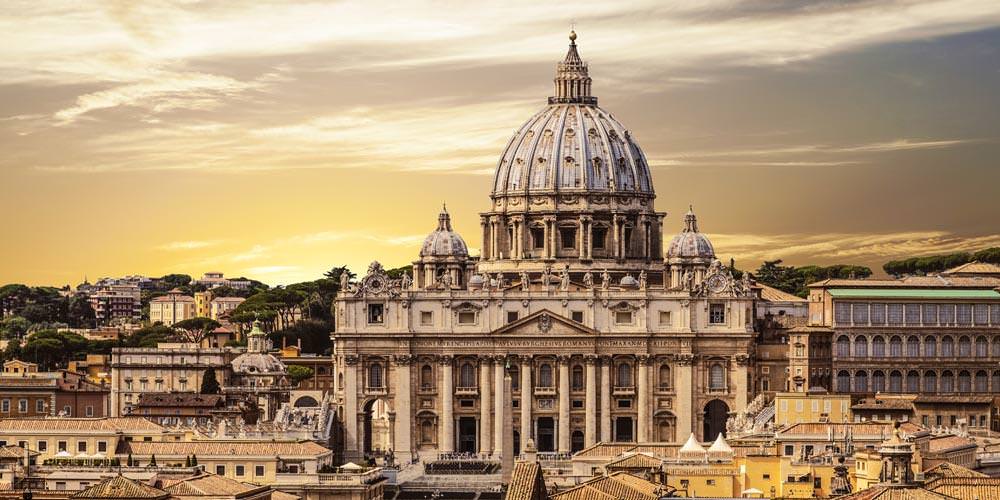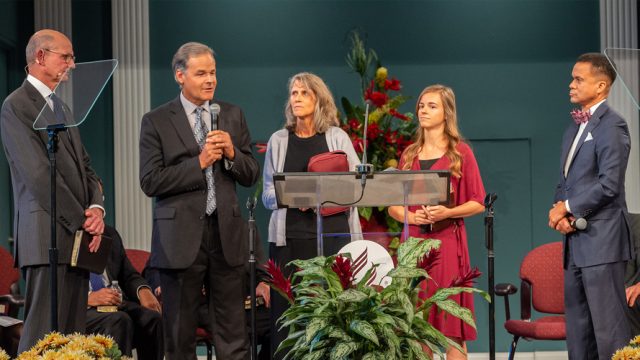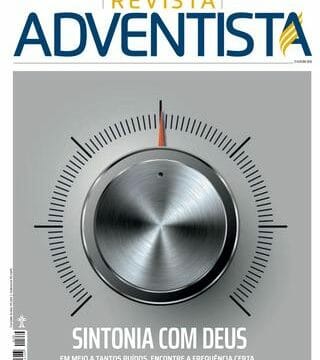On September 26, 2017 world media reported that a group of 40 prominent conservative Roman Catholic scholars and clergy charged Pope Francis with […]

On September 26, 2017 world media reported that a group of 40 prominent conservative Roman Catholic scholars and clergy charged Pope Francis with spreading heretical teachings.[1] The reports stated that a 25-page letter entitled “Filial Correction Concerning the Propagation of Heresies”[2] was delivered to the pope on August 11, 2017.[3] Since there was no response from the Vatican, the letter was made public. In the letter, the signatories charge the pope with propagating seven heretical positions regarding marriage, moral life and the sacraments.[4] It is also of interest that during this celebratory year of the 500th anniversary of the Protestant Reformation, the group sees the influence of Martin Luther upon Francis’ theology.
Publication of the letter immediately raised questions: how is it possible for an infallible pope to be charged with heresy? Are not his writings, pronouncements and other utterances free from error? These questions are important and should be addressed. An understanding how papal infallibility functions within the Roman Catholic Church could also prove helpful in our evangelistic efforts. Let us begin with a brief history of infallibility.
Early Christianity
The Christianity of the early post-Apostolic era found itself in a precarious position. Christians struggled with a number of challenges: Jesus did not return as expected; the passing of the first generation of leaders left Christian communities with a problem of viable leadership;[5] Christian unity was under the external threat of persecutions initiated by the Roman authorities, and the internal threat of dissension, heretical movements, and schisms. Preventing the disintegration of Christianity and maintaining unity among the believers became of utmost importance. Unsurprisingly, a number of Christian writers of the time are on record as addressing the problem of Christian unity as the early Christians looked to their leaders for guidance and protection.
The historical sources point to the system of elders, which seemed to spring out of the Jerusalem Church, as spreading rapidly throughout the Christian world.[6] As it spread, circumstances such as inattention to Scripture and attraction to pagan systems of governance gradually pushed Christianity towards what later became known as the episcopal and papal system of church organization.
It is in the writings of the second-century Christian thinkers that we find the seeds of papal infallibility, though the full development of papal office did not occur until the 4thand 5th centuries, and complete definition of papal infallibility did not occur until the 19thcentury. Early to mid-second-century Christian thinkers believed that the best way to protect the church’s unity was to concentrate authority in the hands of as few people as possible. It is during this period that we see the rise of what became known as mon-episcopate, or one bishop rule. The bishop becomes undisputed head of the congregation, surrounded by a council of presbyters and deacons. The bishop, it was asserted, presided in the place of God and had to be obeyed in all matters related to doctrine and administration.[7]
During the mid-second century a new doctrine of apostolic succession was proposed and adopted by Catholic Christianity. According to this doctrine, the bishops who were ordained by their predecessors, going all the way back to the apostles, exercised the same authority as the twelve apostles. Furthermore, upon their ordination, bishops received a spiritual gift of truth that allowed them to distinguish truth from error (lat. charisma veritatis certum). This special spiritual gift was given to all bishops and was passed on through the rite of ordination.[8] Only those who already possessed the gift could lay hands on those who were to receive it.[9] By the mid-third century each major city or region had a single bishop in charge of all doctrinal and administrative matters. Attempting to communicate with one another, these bishops were seen as protectors of the body of teachings received from the apostles. Centralization of all authority in their hands, and a belief that they received a special gift of discernment, was seen by second and third century Christian thinkers as a formula for protecting unity in the church. This departure from a biblical system of governance laid the foundation for later developments of papal primacy and infallibility.
Later Developments
The 311 AD Edict of Toleration and Constantine’s Edict of Milan (313 AD) together changed the fortunes of Christianity drastically. Rather than being an illegal, persecuted minority the church now became the religion of the empire: its leaders/bishops were thrust into the public arena and charged with shaping the destiny of the empire. But when the doctrinal and moral corruption of some bishops became evident, the church faced a major question: how should it deal with corrupt bishops? The best solution seemed to be a gathering of bishops in a council. While one bishop may fall into heresy, surely God would prevent the collective body of bishops from error.[10] After all, Christ did promise that “the gates of hell” would not prevail against His church, and that He would remain with His church until the end through his Holy Spirit. It was thus assumed that the Holy Spirit would guide such gatherings from erroneous conclusions. At the behest of the emperor Constantine, the first major council met in Nicea in 325 AD to deal with the problem of Arian heresy.[11]
At this very time, bishops of Rome began to assert their leadership over other bishops. While the Roman church was always held in special regard by the Christians of the second and third centuries, it was the fourth century that witnessed a steady development of the primacy of its bishops. During the early fifth century, the bishops of Rome began to teach that only they had received authentic Christian tradition from Peter who had handed it on to the first bishop of Rome. Furthermore, they began to assert that Peter provided the Roman bishop with universal primacy over other bishops. Each Roman bishop was thus a successor of Peter and held the same authority in the church as the leaders of the apostles. Because of this, a teaching developed that God would never allow the Roman bishops to depart from the truth as only they could truly distinguish truth from error. Eventually, the popes began to ascribe to themselves ultimate authority on earth, not only over the church but also over the secular states.[12] The papacy reached the zenith of its power during the fourteenth century when pope Boniface VIII proclaimed that it was necessary to the salvation of every human creature to be subject to the Roman pontiff.”[13]
When papal failure to live up to its ideals became evident during the late middle ages, the earlier question was reconfigured: what happens when popes begin to teach heresy? Two solutions were proposed. First, a movement known as Conciliarism arose proclaiming the supremacy of church councils over the popes. If a pope erred doctrinally it was up to the larger group of bishops gathered in a Council to depose such a pope. The popes and their theologians, however, strongly opposed such an idea and spared no efforts to renounce Conciliarism. By the time of the Reformation, Conciliarism no longer played a significant role.[14] A second approach to curb the power of the papacy is interesting because for the first time it actually invoked papal infallibility. Fearing that the new pope would annul some earlier decisions regarding their order, Franciscan monks of the 14th century proposed that the proclamations of previous popes were infallible and thus irreformable.[15]Papal supremacy reached its climax when, under papal pressure, the Council of Florence (1438-45) declared: “We define that the holy Apostolic See and the Roman pontiff hold primacy over the whole world,” and that it was only to the bishop of Rome that Peter “gave full power of feeding, ruling and governing the universal church.”[16] After that no serious internal attempts were made to curb the power of the papacy from within the church. There were, however, external threats, which eventually led to the proclamation of papal infallibility.
The Challenge of Enlightenment and Liberalism
One such threat, the Enlightenment of the 18th century, along with the most revolutionary of all movements in Western history, dealt a mortal wound to the papacy: the imprisonment of Pope Pius VI by the French general Louis-Alexandre Berthier in 1798, was the ultimate result of this movement. The Enlightenment, also referred to as the Age of Reason, expressed confidence in human reason, proclaimed optimistic view of the world and human nature, and celebrated freedom of inquiry and autonomy of the individual. Its expressed hostility to all things supernatural challenged the concept of biblical revelation adhered to by the church. Most importantly, however, Enlightenment thinkers challenged and eventually rejected all Christian authority, including the authority of the papacy. Religion, if practiced at all, should be a private matter. The Age of Reason proved to be a monumental challenge to Roman Catholicism and the papacy.[17] In crisis mode, the Church’s thinkers responded by emphasizing the powers of the papacy and the need of obedience and adherence to church teachings. It was in these turbulent times, during the early decades of the 19th century, that the idea of papal infallibility was once again resurrected, now under the assumption that the survival and protection of the church’s unity could only be explained in terms of authority and obedience. The church, to survive, needed a visible principle of unity, viz., the papacy. For the papacy to function effectively as the visible principle of unity however, the office needed to be endowed with the gift of infallibility. Absolute spiritual obedience could only be offered to someone who possessed the gift of distinguishing truth from error and could thus proclaim absolute, unchangeable and infallible truth.
Pius IX and Proclamation of Papal Infallibility
While dissenting voices made known their opposition to the doctrine of papal infallibility, Pope Pius IX, who came to power in 1846, gave full encouragement to the new theology of the papal office. He called the First Vatican Council (1869-1870) with the specific purpose of proclaiming the dogma of papal infallibility. The Council’s Dogmatic Constitution Pastor aeternus (“Eternal shepherd”) issued in 1870, defined the pope as having absolute primacy and jurisdiction over the entire church, and proclaimed the papal office as the principle of unity in the church. All believers were required to adhere to the teachings of the popes.[18]
The last chapter of the Constitution spells out three conditions of infallibility: the pope speaks infallibly when he speaks ex cathedra, lit., “out of the chair”—meaning that the pope must speak in his official capacity as pope, not as a mere individual; the infallible statement must be preceded by a specific proclamation that the pope is speaking as the “Pastor and Doctor of all Christians”. Secondly, the pope speaks infallibly when he invokes his “supreme apostolic authority,” i.e., that he speaks on behalf of the apostles. Thirdly, the pope speaks infallibly when the teaching being defined concerns faith and morals. A fourth condition also prevails, viz., that his teaching is binding on all Christians.[19] For the pope to speak infallibly, all four conditions must be fulfilled, with such decrees being considered as infallible and irreformable. In Catholic vocabulary, “irreformable” means that these teachings are in agreement with the deposit of faith given to the first bishops by the apostles of Christ.
Catholic scholars point out that only two papal statements, both relating to Mary, fulfil the above conditions and are thus considered as infallible: the dogma of the bodily Assumption of Mary to heaven promulgated by Pius XII in 1950; and a grandfathered dogma of Immaculate Conception of Mary promulgated by Pius IX in 1854.[20] Even though there has been considerable discussion among Catholic theologians regarding various papal statements and their significance, no other papal statements are officially considered as infallible. Papal encyclicals, letters, speeches and comments deserving special attention by Catholic believers are often shrouded in language of authority and obedience, but are not infallible. As the pope of the Second Vatican Council (1962-1965), John XXIII, famously stated: “I am not infallible. The pope is only infallible when he speaks ex cathedra. I will never speak ex cathedra, therefore I am not infallible.”[21]
The foregoing historical clarifications explain how a group of theologians and clergy can accuse the current pope of spreading heretical teaching without themselves being accused of departing from church teaching or facing consequences: they are simply responding to the pope as an individual. Their letter is motivated by a fear that, because of his great influence, encyclicals and casual comments from Francis I may be interpreted as infallible by believers who do not know better.
[1]http://www.cnn.com/2017/09/25/world/pope-heresy/index.html
[2]The full title is Correctio filialis de haeresibus propagatis
[3]the letter accumulated scores of signatures which at one time, but no longer, could be found at www.correctionfililis.org
[4]The above-cited web page once listed the papal errors insinuated by the signatories of the letter.
[5]Preoccupation with the future leadership of the church is already evident in Paul’s later writings: See 1 Tim. 3:1-12; Titus 1:5-9.
[6]Hans von Campenhausen, Ecclesiastical Authority and Spiritual Power in the Church of the First Three Centuries (Stanford, CA: Stanford University Press, 1969), 76.
[7]Ignatius Magnesians 6.4 in Early Christian Writings: The Apostolic Fathers, trans. Maxwell Staniforth (Harmondsworth, UK: Penguin, 1968), 88; Edwin Hatch, The Organization of the Early Christian Churches (London: Longmans, Green and Co., 1918), 89.
[8]Irenaeus, Against Heresies 4.26.2 in in The Ante-Nicene Fathers, eds. Alexander Roberts and James Donaldson (Grand Rapids, MI: Eerdmans, 1989), 1:497; Eric Osborn, Irenaeus of Lyons (Cambridge: Cambridge University Press, 2004), 146; Henri De Lubac, The Motherhood of the Church (San Francisco: Ignatius Press, 1982), 248; cf. Catechism of the Catholic Church (Liguori, MO: Liguori Publications, 1994), 389, [paragraph 1556-1558].
[9]The Treatise on the Apostolic Tradition of St. Hippolytus of Rome, ed., Gregory Dix (London: The Alban Press, 1992), 2-18.
[10]David J. Stagaman, Authority in the Church (Collegeville: The Liturgical Press, 1999), 83.
[11]Gale Heide, Timeless Truth in the Hands of History: A Short History of System in Theology(Cambridge: James Clarke & Co., 2012), 55-56.
[12]Mark E. Powell, Papal Infallibility: A Protestant Evaluation of an Ecumenical Issue (Grand Rapids: William B. Eerdmans Publishing Company, 2009), 33; Kalus Schatz, Papal Primacy: From Its Origin to the Present (Collegeville: The Liturgical Press, 1996), 26-30.
[13]Eamon Duffy, Saints and Sinners: A History of the Popes (New Haven: Yale University Press, 1997), 119-121.
[14]Brian Tierney, Origins of Papal Infallibility, 1150-1350 (Leiden: E. J. Brill, 1972), 154-159; Schatz, 103-105; Stagaman, 83-85.
[15]Tierney, 93-109.
[16]Brett Edward Whalen, The Medieval Papacy (New York: Palgrave Macmillan, 2014), 180.
[17]Richard R. Gaillardetz, “Introduction,” in When the Magisterium Intervenes: The Magisterium and Theologians in Today’s (Collegeville: Liturgical Press, 2011), ix.
[18]Duffy, 222-235.
[19]John Joy, Cathedra Veritatis: On the Extension of Papal Infallibility (Howell: Cruachan Hill Press, 2012), 5-6; cf., Stagaman, 114-115.
[20]Laurent Cleenewerck, His Broken Body: Understanding and Healing the Schism Between the Roman (Washington, D.C.: Euclid University Press, 2007), 47.
[21]Hans Küng, Reforming the Church Today (New York: Crossroad, 1990), 69








